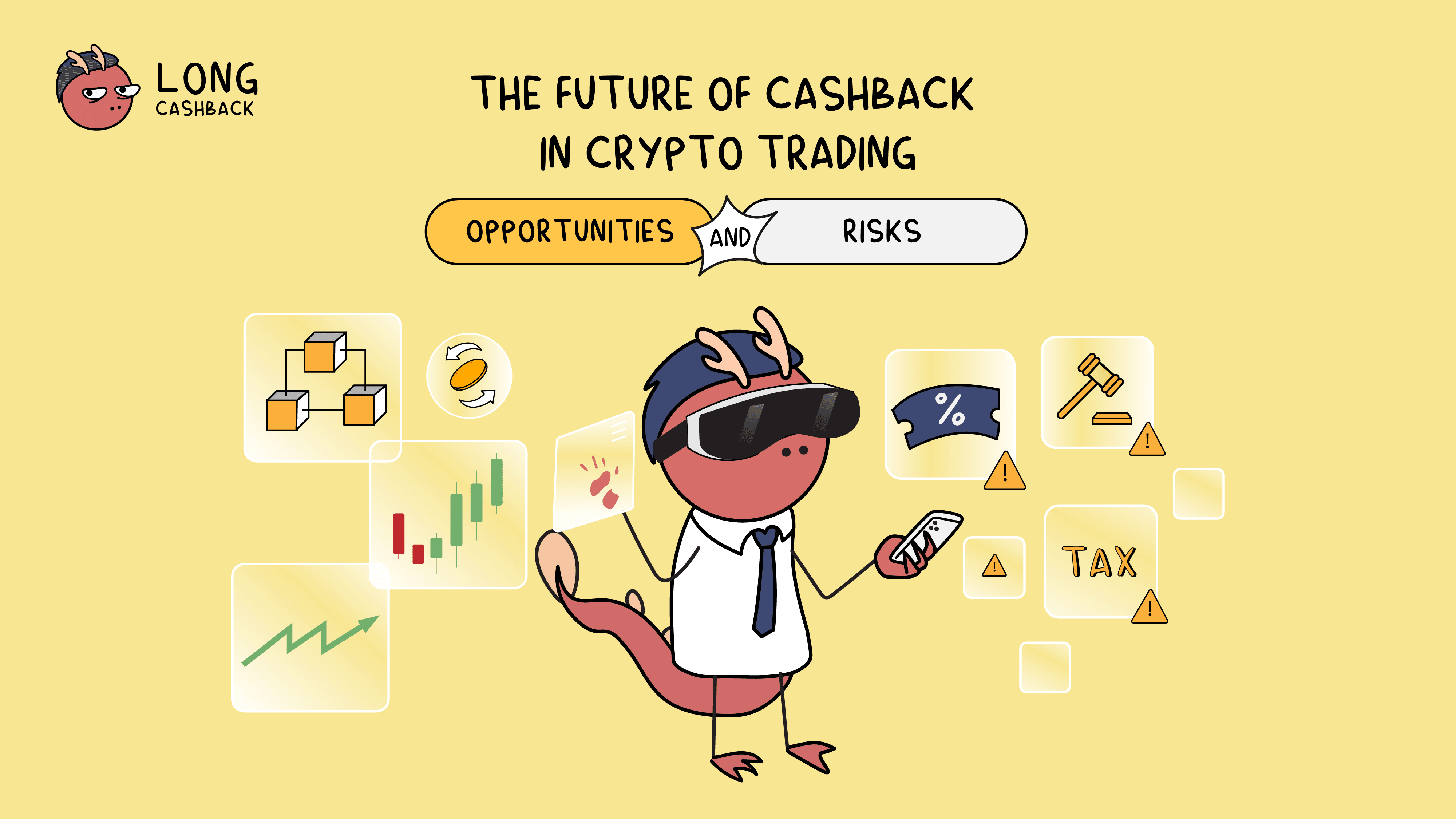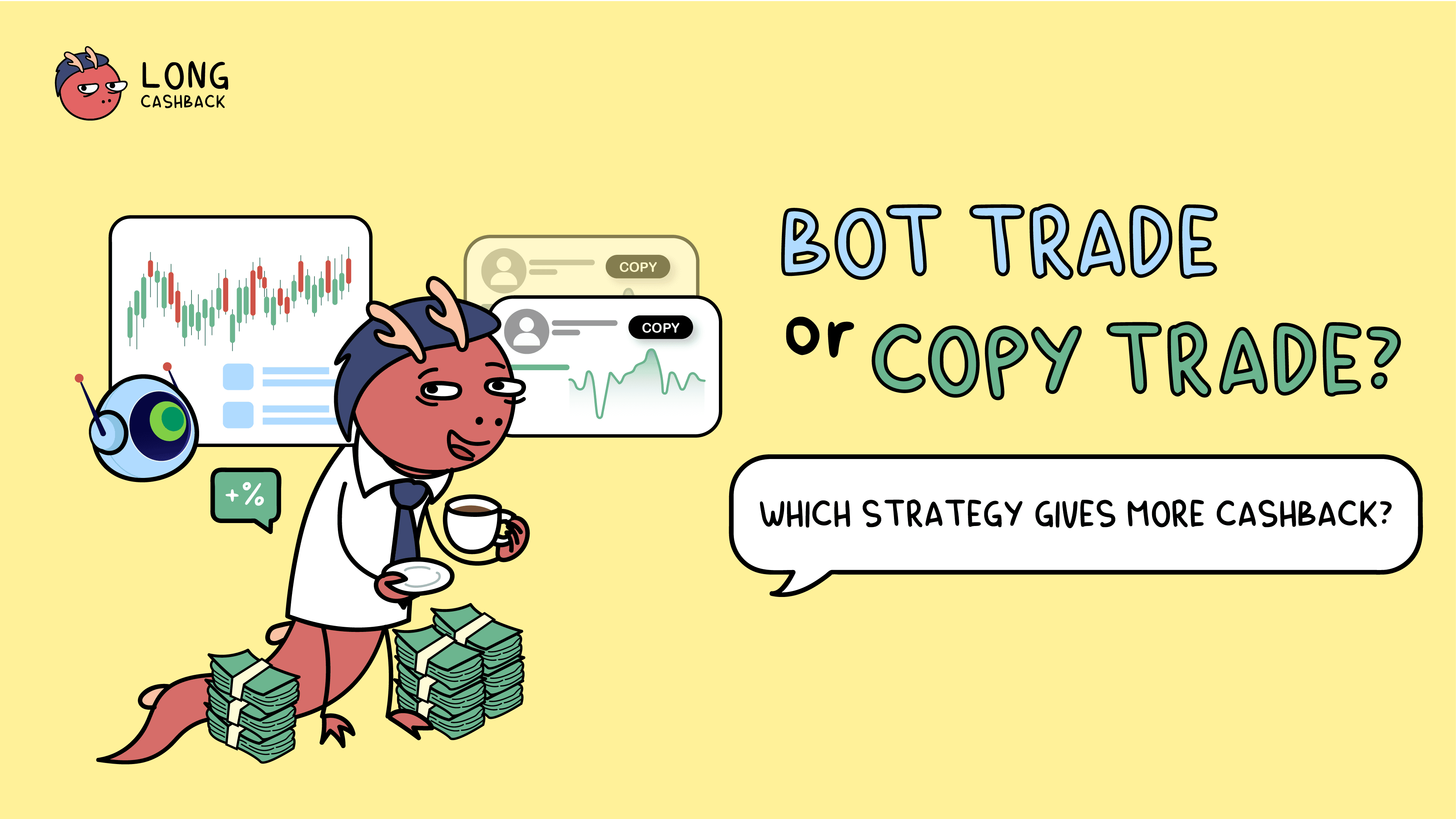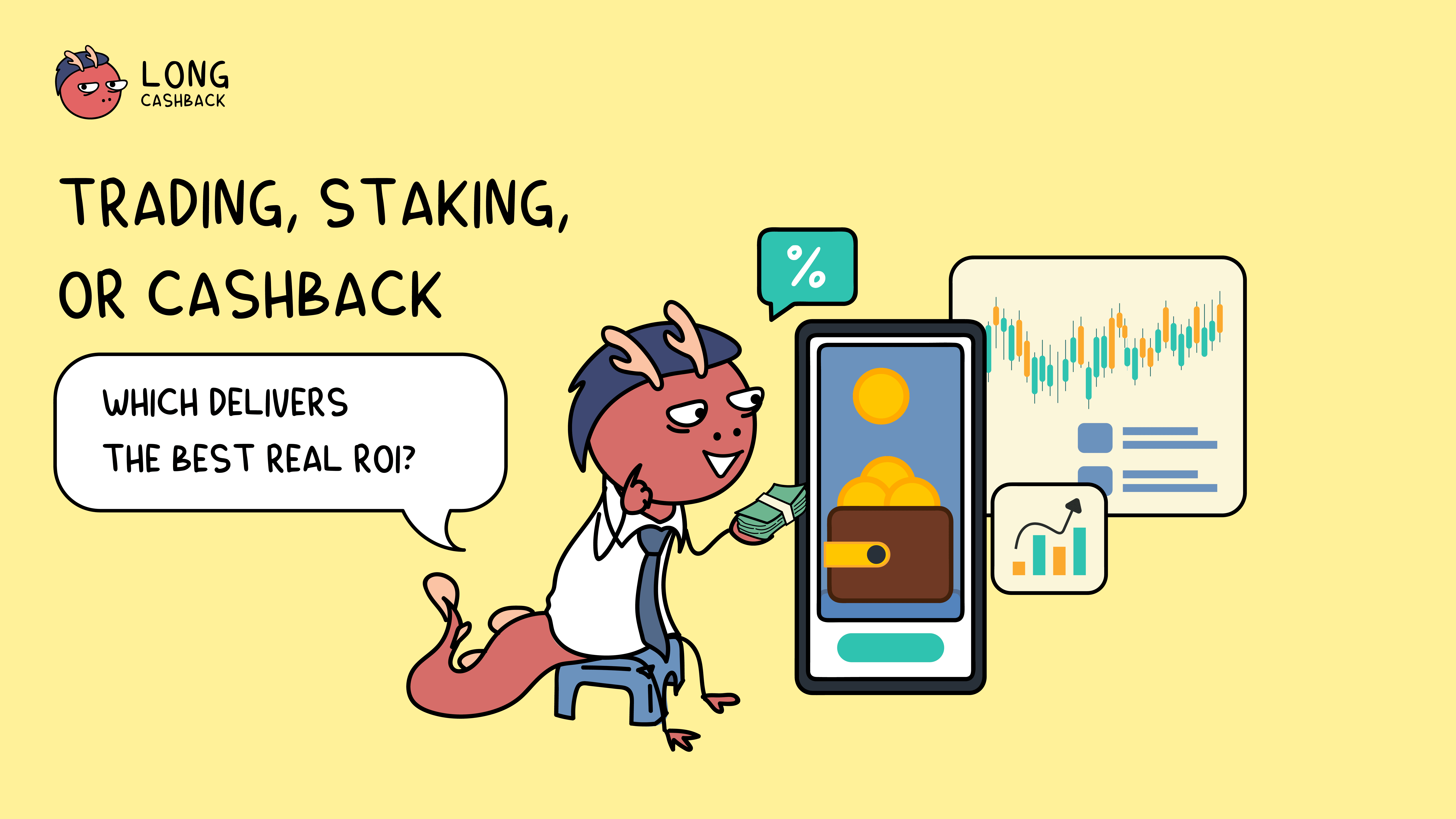Cashback in crypto trading is shifting from a “nice-to-have perk” to a core strategy in how exchanges attract and retain users. At a time when trading fees and network costs (gas) remain painful for many traders, every fraction of a percent saved goes directly back into net profit.
This article takes a deep look at where cashback is headed in crypto: the opportunities, risks, product trends, and regulatory frameworks that will shape its future so you can decide whether to take advantage or stay on the sidelines.
1. Why Cashback Is Making a Comeback
Competitive pressure among CEXs
Leading exchanges are raising referral and cashback programs to record levels, removing time caps and shifting toward performance-based models.
- Binance: Recently updated its Referral & Affiliate program, offering up to 50% cashback across both Spot and Futures, no expiry, no cap. A clear sign that user costs have become the next battleground.
- Bybit: Still operates a referral model (up to ~30% for basic tiers) with higher affiliate rates for larger partners, signaling that the market is segmenting rewards by user profile.
- MEXC: Promotes 40% cashback (up to 60% in certain regions/programs) with real-time payouts across Spot, Futures, and DEX+. This forces competitors to match incentives or risk losing liquidity.
Takeaway: Transparent, high, and sustainable cashback programs are becoming the default standard among top CEXs. Those that don’t adapt risk losing volume.
2. On-Chain Evolution: Cashback 2.0
The future of cashback isn’t just about returning a slice of trading fees. On-chain, new forms of rebates and surplus sharing are emerging:
- CoW Protocol / CoW Swap: Protects users from sandwich/front-running attacks by batching orders, then redistributes execution “surplus” back to traders—a hidden form of cashback. To date, hundreds of millions in surplus value have been returned to users.
- Gas rebates and abstraction: Some platforms now cover or rebate network gas fees, letting users trade without paying gas directly, reducing effective costs.
On-chain cashback is becoming automatic and embedded into trade execution itself, not just a marketing incentive.
3. Regulation: Opportunity for the Compliant, Risk for the Aggressive
- EU (MiCA): Establishes unified standards for crypto service providers, requiring clear disclosures and licensing. Cashback isn’t banned, but any promotions must be transparent and compliant. Countries like France are already rolling out licensing paths for 2024–2025.
- UK (FCA): From October 2023, “refer-a-friend” incentives in high-risk financial products, including crypto, are restricted. This impacts how cashback offers can be promoted to UK users.
Cashback remains legal in most regions, but the way it is communicated matters. Platforms that stay compliant will gain a long-term advantage as regulators tighten enforcement.
4. Taxes: Cashback Lowers Net Cost—But Doesn’t Erase Tax Obligations
In the US and UK, rewards and rebates from crypto may be taxable income at fair market value upon receipt. Trading gains/losses remain subject to capital gains rules.
- Cashback reduces effective trading costs, but it does not exempt users from reporting obligations.
- Proper record-keeping (API/CSV exports, monthly payout logs) is key to avoiding headaches during tax season.
5. Why Cashback Will Keep Growing in the Next 12–24 Months
- Fee pressure on traders: Even a 0.08%–0.10% fee per side accumulates quickly. Cashback in the 20–50% range can recover meaningful amounts for scalpers, grid traders, or automated DCA strategies.
- More mature programs: No-cap, no-expiry, and performance-linked payouts make cashback look less like short-term promotions and more like value-sharing models.
- On-chain rebates by design: MEV-protection, surplus sharing, and gas rebate schemes are set to become standard UX features.
- Clearer regulations: MiCA in Europe and evolving rules worldwide are creating a safer, more transparent environment for cashback models that comply.
6. The Risks: Cashback Isn’t a Free Lunch
- Compliance & promotion risks: Misleading claims or non-compliant promotions can trigger enforcement, especially in stricter markets like the UK.
- Incentive misalignment: High cashback rates may encourage wash trading if not monitored. Serious platforms must enforce anti-bot and anti-abuse controls.
- Financial sustainability: Cashback must be funded through spreads, fee-sharing, or operational efficiency—not unsustainable burn.
- Tax/accounting complexity: Misclassifying cashback (income vs. fee reduction) or failing to track records can create issues at tax time.
7. How to Use Cashback Smartly
- Choose transparent programs: Look at payout type (cash, stablecoin, token), frequency, caps, and conditions. “No cap, no expiry” programs are easiest to evaluate.
- Practical example:
Long Cashback has been gaining traction among traders by paying rewards directly in stablecoins instead of volatile tokens. Cashback is automatically deposited into users’ wallets every month—no staking, no holding exchange tokens. This clarity allows traders to treat cashback as a steady revenue stream to offset costs or reinvest. With up to 50% cashback across 9 top CEX/DEXs, it’s one of the most practical models for maximizing net trading returns.
👉 Learn more and register at Long Cashback. - Align with trading strategies: High-frequency approaches like scalping, grid, or swing trading benefit most from cashback. Consolidating volume on one platform also accelerates VIP tiers.
- Leverage on-chain rebates: When swapping on-chain, consider routers with MEV protection, surplus sharing, or gas rebates to further cut hidden costs.
- Stay tax-ready: Keep monthly logs of cashback, classify correctly, and prepare for audits.
8. Long Cashback in the Bigger Picture: Real, Usable Rewards
In the “cashback race,” the real value lies not in flashy percentages, but in usable rewards. Stablecoin payouts, transparent reporting, and 24/7 support are what make cashback practical.
As competition heats up and profits tighten, every basis point saved counts. Cashback effectively turns fixed trading costs into a revenue stream, giving traders more breathing room to build sustainable returns.
9. Looking Ahead: The Next 12–24 Months
- CEXs: Expect long-term cashback upgrades—fewer vouchers, more performance-based structures with no caps.
- DEXs: MEV-aware execution, surplus sharing, and gas rebates will become embedded in protocol design.
- Regulation: MiCA licensing will go live in the EU; UK will continue strict enforcement of crypto promotions.
- Tax: More clarity and standardization on cashback reporting worldwide.
10. Conclusion: Cashback as a Competitive Edge
Cashback in crypto trading is no longer a short-lived marketing gimmick. It’s becoming a core component of trader profitability. With trading fees rising and competition among platforms intensifying, cashback is poised to become the new standard.
Those who embrace it early will hold a long-term advantage. In the future of crypto, success isn’t just about picking the right coin—it’s about minimizing costs at every step. And cashback may well be the key to making every trade smarter.




